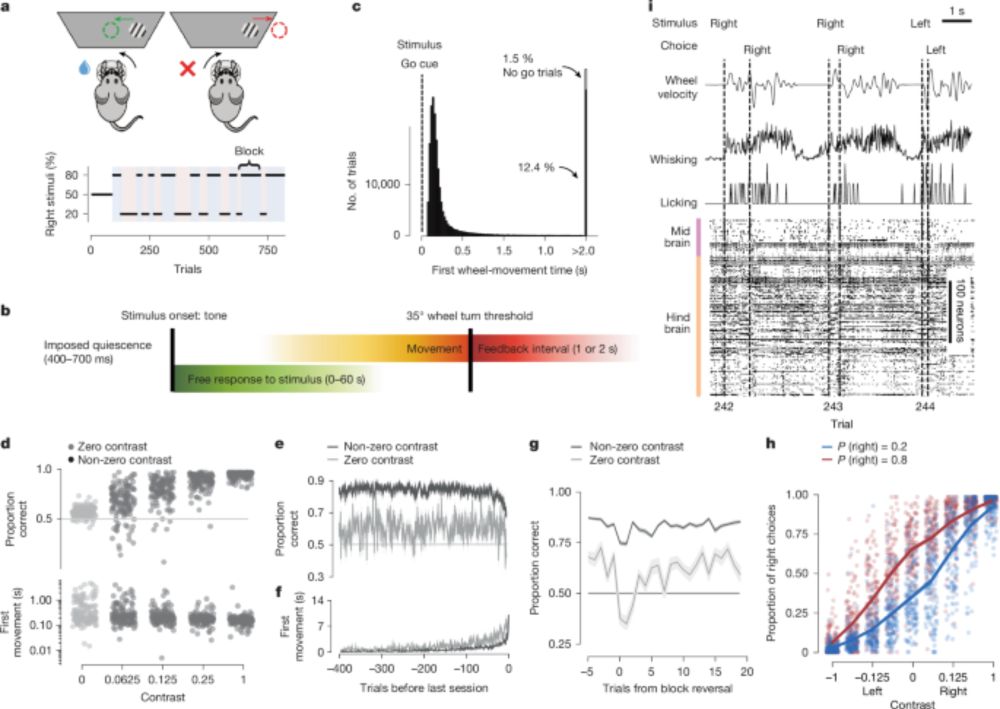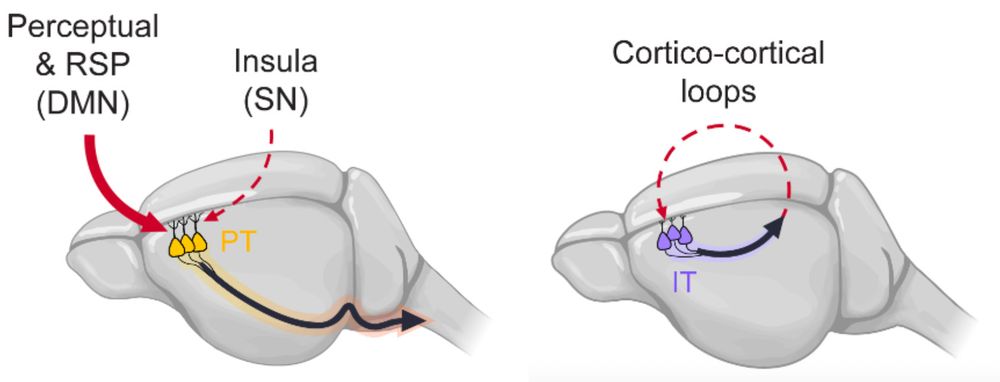
www.biorxiv.org/content/10.1... 1/13 🧵

www.biorxiv.org/content/10.1... 1/13 🧵
“'Noise mining is a funny thing,' he said. 'When you first see a bit of noise, it doesn’t look so impressive. But as you work it out of the rock, it gets more and more refined.' This process, he explained, is called 'shucking.'"



www.nature.com/articles/s41...
I love this figure which both echoes and undermines the famous figure from Schultz et al. (1997).

www.nature.com/articles/s41...
I love this figure which both echoes and undermines the famous figure from Schultz et al. (1997).
apply.interfolio.com/174756

A brief rundown...
www.nature.com/articles/s41...

A brief rundown...
www.nature.com/articles/s41...
@fannycazettes.bsky.social
www.nature.com/articles/s41...

@fannycazettes.bsky.social
www.nature.com/articles/s41...
#neuroskyence
www.thetransmitter.org/brain-inspir...

#neuroskyence
www.thetransmitter.org/brain-inspir...
Excited to announce the 2025 Multi-Agent Behavior Challenge on cross-lab supervised action recognition in mice 🐁🐀🖱️
Running on Kaggle until December 15th, with a $50,000 prize pool going to the top five submissions!
www.kaggle.com/competitions...

Excited to announce the 2025 Multi-Agent Behavior Challenge on cross-lab supervised action recognition in mice 🐁🐀🖱️
Running on Kaggle until December 15th, with a $50,000 prize pool going to the top five submissions!
www.kaggle.com/competitions...
Less than a day online, and already there are eight notebooks to explore!
www.kaggle.com/competitions...
Less than a day online, and already there are eight notebooks to explore!
www.kaggle.com/competitions...
www.thetransmitter.org/the-big-pict...

www.thetransmitter.org/the-big-pict...
We found a preference for visual objects in the mouse spatial navigation system where they dynamically refine head-direction coding. In short, objects boost our inner compass! 🧭
www.science.org/doi/10.1126/...
🧵1/

We found a preference for visual objects in the mouse spatial navigation system where they dynamically refine head-direction coding. In short, objects boost our inner compass! 🧭
www.science.org/doi/10.1126/...
🧵1/

🧠 Introducing "Spacetop" – a massive multimodal fMRI dataset that bridges naturalistic and experimental neuroscience!
N = 101 x 6 hours each = 606 functional iso-hours combining movies, pain, faces, theory-of-mind and other cognitive tasks!
🧵below

🧠 Introducing "Spacetop" – a massive multimodal fMRI dataset that bridges naturalistic and experimental neuroscience!
N = 101 x 6 hours each = 606 functional iso-hours combining movies, pain, faces, theory-of-mind and other cognitive tasks!
🧵below
These disputes are multidimensional, principled and fascinating. Here, I unpack them.
www.thetransmitter.org/the-big-pict...

These disputes are multidimensional, principled and fascinating. Here, I unpack them.
www.thetransmitter.org/the-big-pict...
When I flush my toilet, the level in the tank and the flow rate in the supply pipe become perfectly correlated. Yet these toilet areas have distinct functions.
www.nature.com/articles/s41...

When I flush my toilet, the level in the tank and the flow rate in the supply pipe become perfectly correlated. Yet these toilet areas have distinct functions.

#Psychedelics induce the formation of new synapses, but where do they connect?
Our rabies tracing study reveals that #psilocybin shifts connectivity across specific cortical networks.
www.biorxiv.org/content/10.1...
1/12

#Psychedelics induce the formation of new synapses, but where do they connect?
Our rabies tracing study reveals that #psilocybin shifts connectivity across specific cortical networks.
www.biorxiv.org/content/10.1...
1/12
Meet Mike
*30+ years severe depression
*first hospitalized @ 13y
*20 meds
*3 rounds of ECT
*2 near-fatal suicide attempts
Mike felt joy for the first time in decades after we turned on his new brain pacemaker or PACE
see videos, read paper, follow thread
doi.org/10.31234/osf...
Meet Mike
*30+ years severe depression
*first hospitalized @ 13y
*20 meds
*3 rounds of ECT
*2 near-fatal suicide attempts
Mike felt joy for the first time in decades after we turned on his new brain pacemaker or PACE
see videos, read paper, follow thread
doi.org/10.31234/osf...

